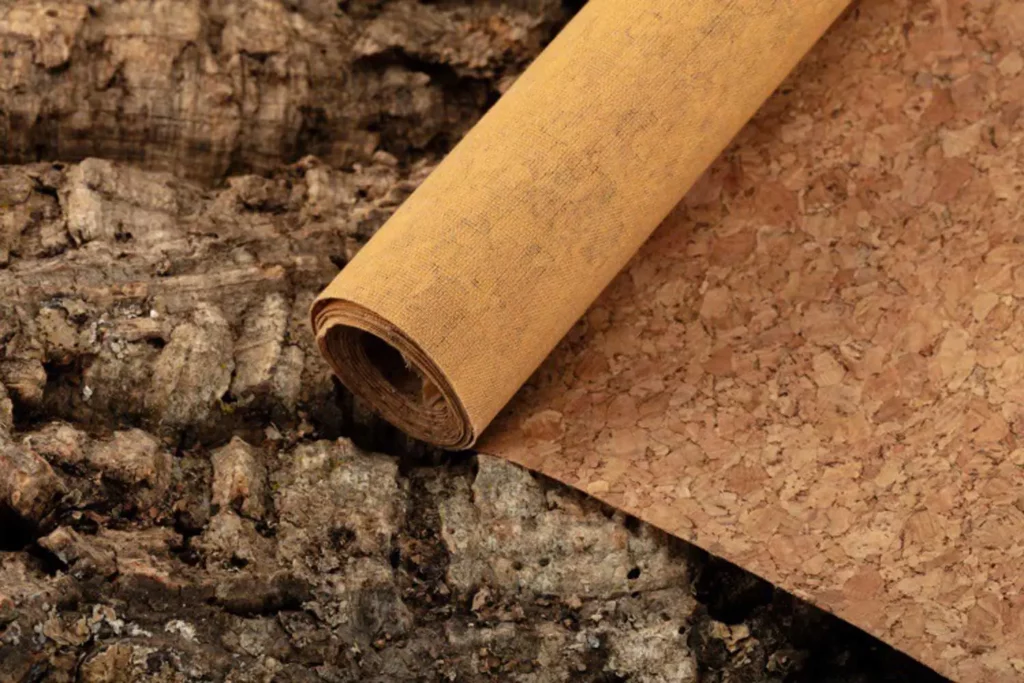
Cork has thermal and acoustic insulation and is able to regulate room temperature. It provides comfort in locations that require special care (e.g. hospitals, schools, kindergartens, theatres, cinemas, commercial buildings, conference rooms, etc.). Cork is resilient, softening impact, and its strong sound absorption capacity helps to reduce noise, in addition to being comfortable, natural, eco-friendly, hygienic and healthy, durable and easy to maintain. Here we list the top 10 cork designs in architecture.
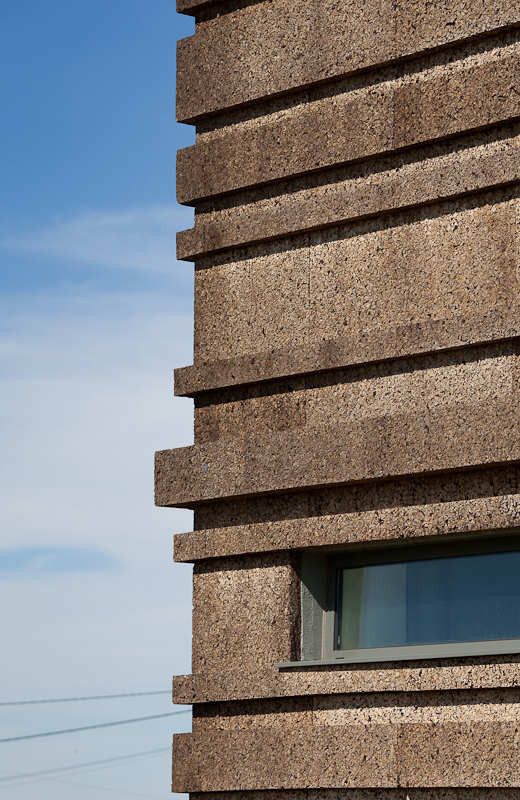
The Portuguese Pavilion at the Shanghai Expo has a façade made of cork. Cork is a characteristic Portuguese material that is not only environmentally friendly but also recyclable. This creative and environmentally friendly example was chosen to promote the image of Portugal at the Expo. Lisbon’s commercial plaza, an urban space that Portuguese people are fascinated by, will also be featured. In addition, the pavilion will not only showcase the concept of sustainability in the modern city but will also highlight the important role this concept plays in Portugal’s economic and environmental policies.
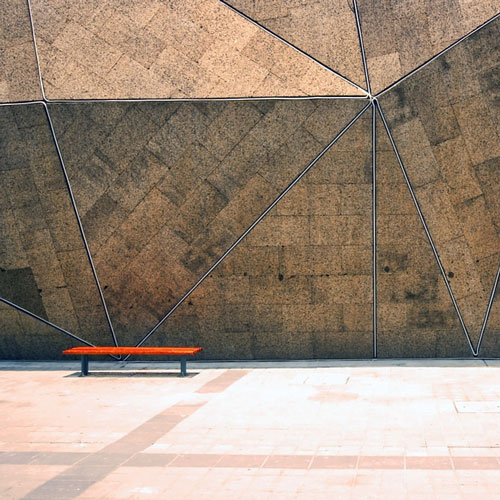
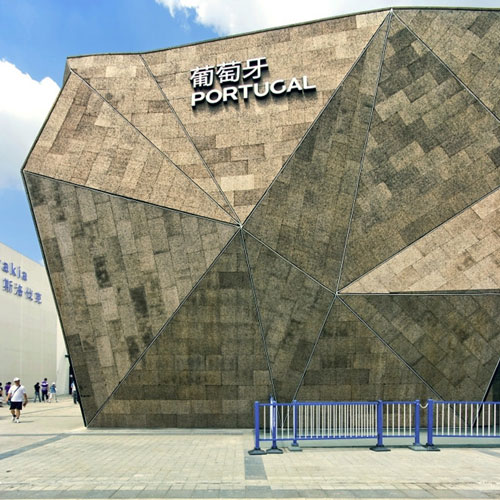
Architect Nate Dalesio has completed a cork-covered home in New York for himself and his young family.
According to the architect, the cork provides an extra layer of insulation that helps to reduce the home’s heating energy consumption.
Dalesio says: “A modest budget of $150 per square foot was used to invest in highly insulated walls, roof, floors, and windows to minimise utility bills, and the exterior cladding doubled as cork board insulation.”
Cork is a useful building material as it is naturally resistant to moisture and mold. It is also lightweight and has the potential to be recycled after use.
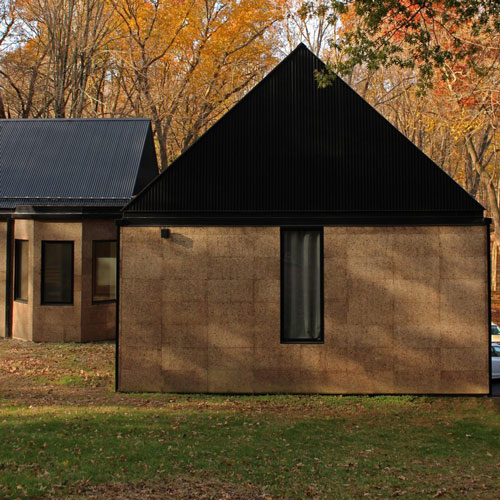
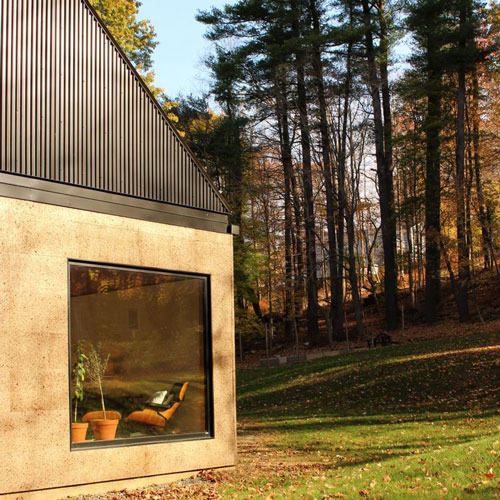
LCA Architetti has used cork, straw and wood to build a simple and sustainable house overlooking woodland in the small town of Magnago, Italy.
Aptly named ‘House of Wood, Straw and Cork’, this home near Milan was commissioned by a young couple who wanted to live more sustainably and in closer contact with nature.
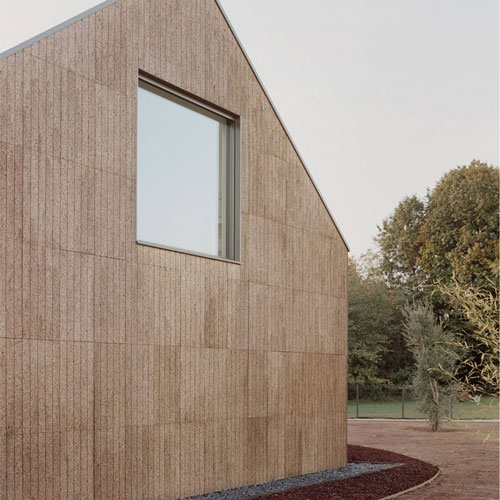
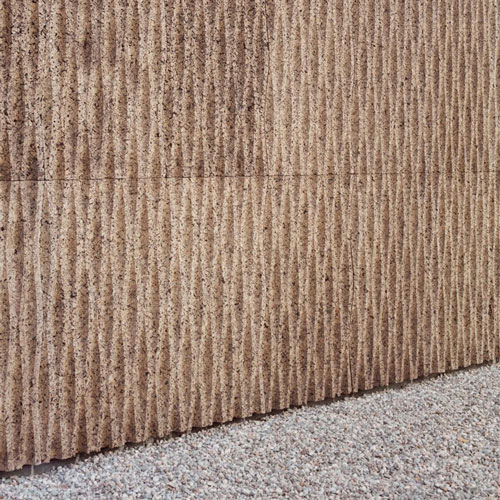
The design of LCA Architetti has been deliberately scaled down to maintain a focus on the home’s rural setting while minimising its environmental impact.
This was made possible by the use of natural and recycled building materials, including prefabricated timber structures, straw insulation and cladding made from cork – a renewable, resistant and insulating material harvested from the bark of the cork oak tree.
The use of cork also provides a thermally efficient skin for the house which, together with the straw insulation, helps to minimise the building’s energy requirements.
The straw used to insulate the building was obtained from rice plants discarded by local farmers.
The Serpentine Gallery in London has unveiled the plans of Swiss architects Herzog & de Meuron and Chinese artist Ai Weiwei for the Serpentine Gallery pavilion: they will carry out an archaeological excavation to find traces of the former pavilion on the site and then cork it over the trench.
The interior of the pavilion will be covered in cork, a sustainable building material chosen for its unique qualities and echoing the excavated earth. Using an archaeological approach, the architects have created a design that will inspire visitors to gaze beneath the surface of the park, and to travel back in time through the ghosts of earlier buildings.
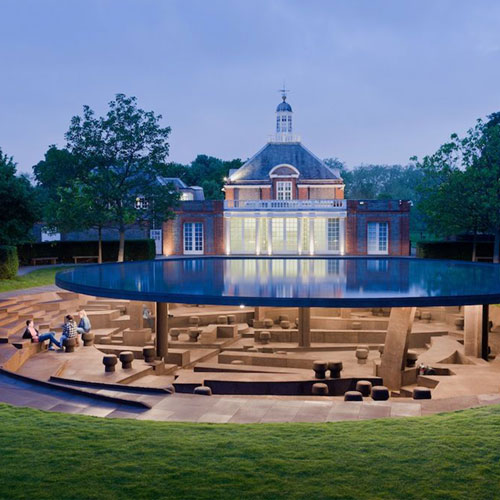
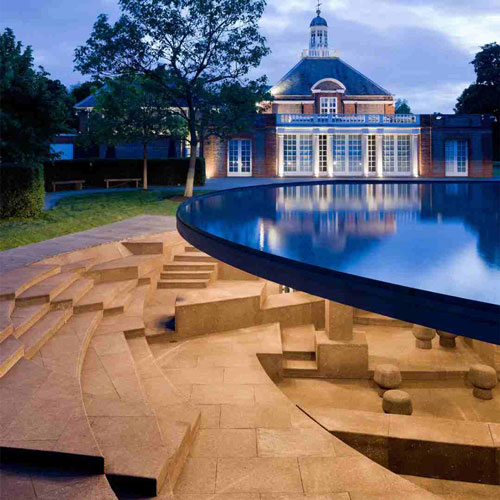
South African architecture studio Counterspace will use cork and bricks made from recycled construction waste to build this year’s Serpentine Pavilion, drawing on the experiences of London’s migrant communities in the design.
The K-Briq module is a new technology from Kenoteq that uses 90% recycled construction and demolition waste to make the bricks that will be used in the pavilion.
According to Kenoteq, as these bricks do not need to be fired, they produce only one tenth of the carbon emissions of standard fired bricks.
The other main material will be cork from Portuguese producer Amorim. Cork is considered a more sustainable alternative to many woods because it does not require cutting down trees to harvest the bark.
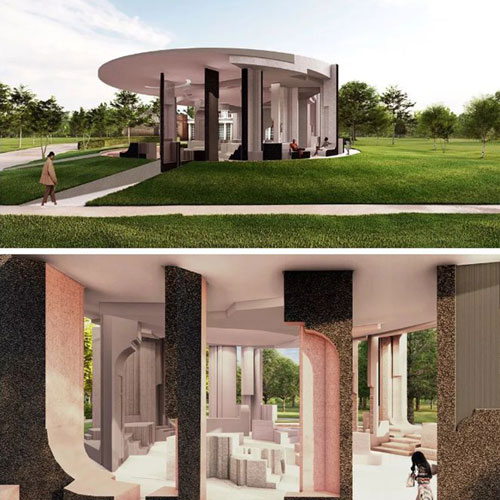
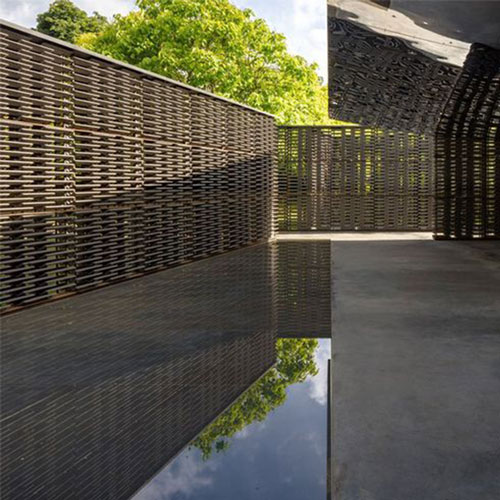
Matthew Barnett Howland and Dido Milne and Oliver Wilton used cork blocks to build Cork House in Berkshire, England, which was shortlisted for this year’s Stirling Prize.
Set in the hedgerows alongside the River Thames, the house was designed by Howland, Milne and Wilton to address the construction industry’s impact on biodiversity, greenhouse gas emissions and reliance on disposable materials.
The house consists of five volumes, topped by a pyramidal skylight and made up of sustainable cork blocks supported by timber components. It is designed to be easily dismantled, reused or recycled in the future.
The house consists of 1,268 cork blocks which are combined into five connected volumes with a unique roof consisting of five pyramid-shaped light wells. These were designed by the studio to span the open interior and bring in light while ensuring that they can also be easily built and dismantled by hand.
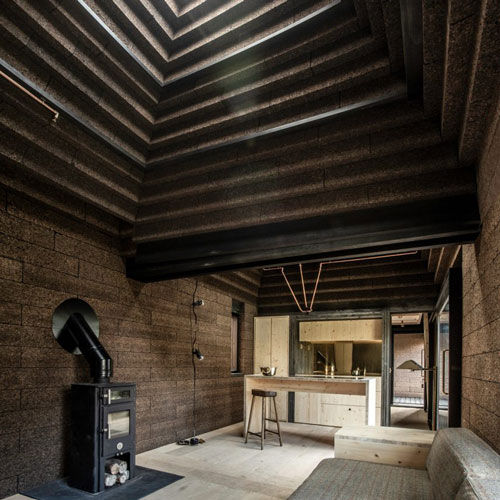
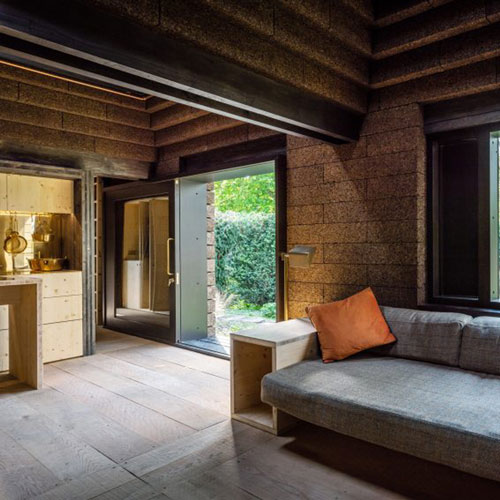
Portuguese architect José Carlos Cruz claims to have built the world’s first cork-clad hotel, located between olive and cork trees in the Alentejo region of Portugal.
Located just outside of Evora, the Ecork Hotel includes a cork-clad restaurant and leisure centre with 56 hotel suites in a series of adjoining bungalows.
José Carlos Cruz and his design team chose cork to cover the walls of the main building as it is both easily accessible and highly insulating.
“Portugal is the second largest exporter of cork in the world, so we thought it would be a good starting point to build this building,” said project architect Antonio Cruz.
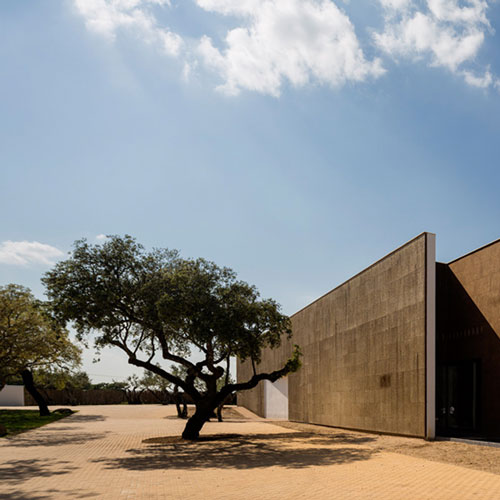
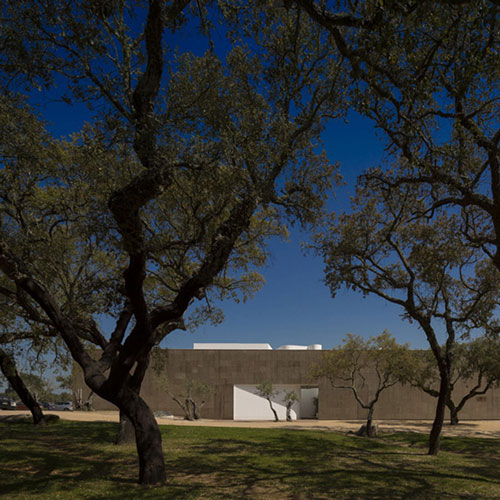
Cork Studio is a garden building made almost entirely of cork, built by Studio Bark as a prototype for a building that can be fully recycled, reused or composted.
To challenge the building industry’s reliance on ‘unhealthy disposable materials’, London architects Studio Bark sought to demonstrate how an environmentally friendly material could be used to form the entire building envelope.
After a series of experiments testing water resistance, fire resistance and resistance to degradation, Studio Bark chose to use cork – a strong and durable material sustainably harvested directly from the bark of the cork oak tree.
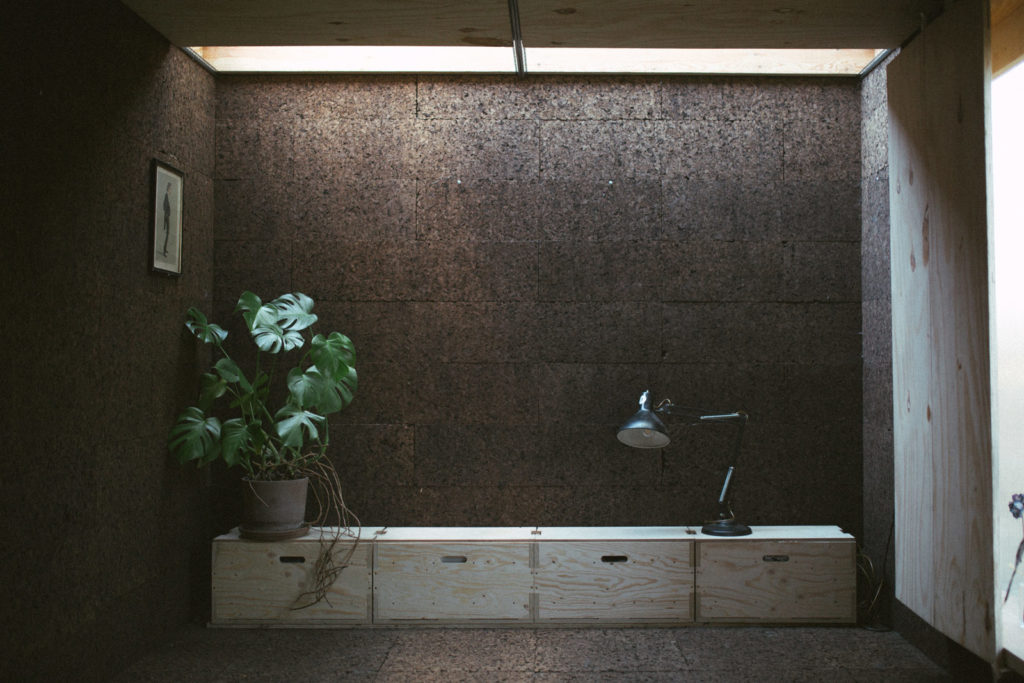
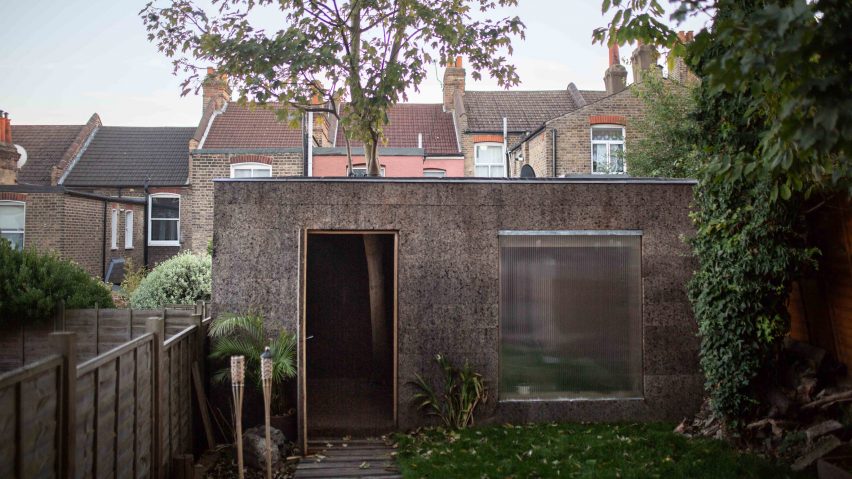
All elements of this sturdy cork building can be disassembled at the end of its useful life and the individual components are either fully biodegradable or recyclable.
The cork studio was constructed using waste pellets from a wine cork manufacturer.
These pellets are turned into solid blocks through a heating process, which triggers them to expand and release a natural resin that binds them together. After this, the blocks are cut to the required board size and joined on site.
The Cork Screw House, designed by Rundzwei Architekten in Berlin, has a façade and roof covered with waste cork from the wine industry.
The rectangular cork panels provide a thermally efficient skin for the house and also create a bold ‘monolithic’ aesthetic.
Rundzwei Architekten decided to use this material because it was looking for a product with high acoustic performance, which also led it to discover the environmental benefits of cork.
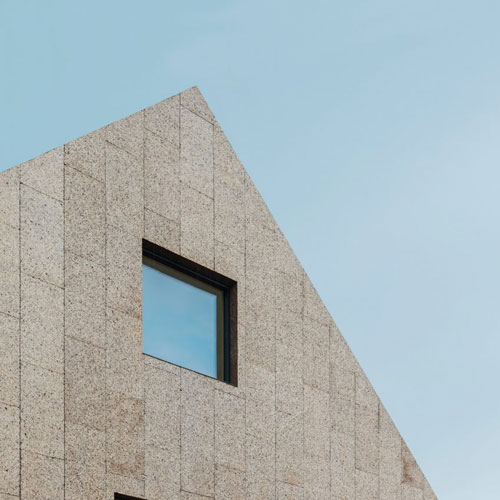
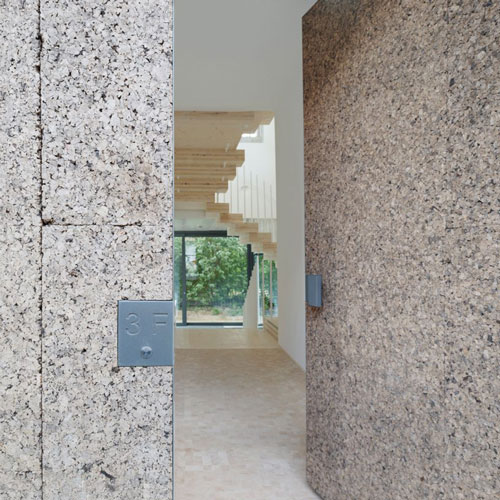
Natural cork also has a very high insulation value, which makes it ideal for use as cladding. This choice of material contributes significantly to the energy efficiency and sustainability of the building.
The facade panels of Cork Screw House are made by a sustainable process of heating and pressing waste cork pellets, which were acquired from a wine bottling company.
Heating the cork causes it to release a natural resin that binds its pellets together to form a lightweight, durable slab that can be cut to the required size.
The 100% natural and sensory stimulating cork is at the heart of the temporary installation “Summer Square”, developed by the architect José Neves for the Centro Cultural de Belém (CCB).
The project was invited by CCB’s architectural project South Garage and Amorim Isolamentos provided the enlarged cork blocks. The huge dark cork blocks contrast with the limestone on the walls of the building, occupying the square, transforming the area and inviting people to experience the installation on a sensory and physical level.
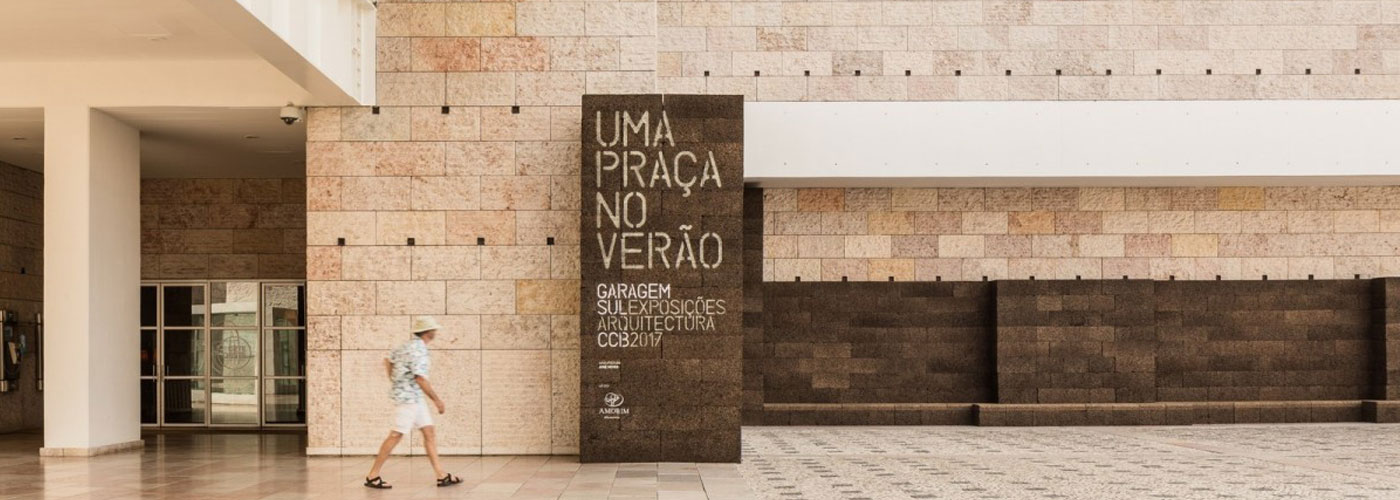
The architect emphasises the unique properties of cork in terms of thermal and acoustic insulation, as well as its texture, malleability and lightness (which makes cork easy to handle, even in large blocks).
This multi-faceted architecture creates an interesting area in which one can walk through or linger, where memories meet ephemeral experiences, chosen as the main stage for the CCB’s summer cultural programme.
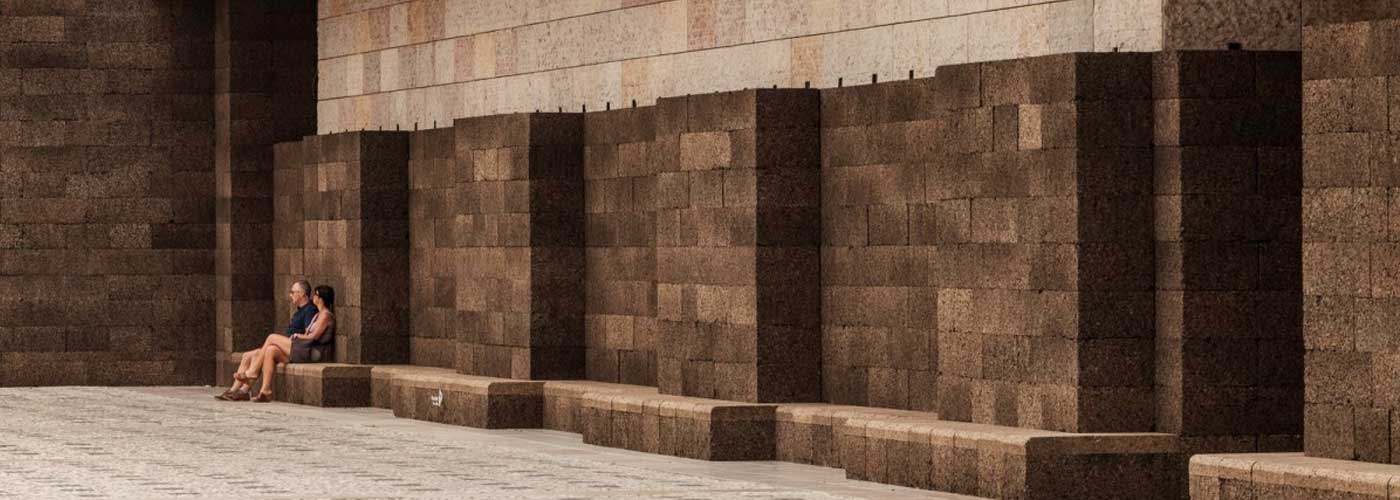
There is no doubt about the pursuit of sustained economic growth and its significant impact on our environment and society. Globally, awareness of the need for sustainable development is growing and the principles of sustainable development are entering national and international policies. As the population continues to grow and we all seek to improve our environment, creating significant additional demands on resources, sustainability becomes a key focus of any and all design more important and necessary than ever.
Based on the many outstanding properties of cork, the cork can be made into cork fabrics, cork sports products, cork bags, etc., which are considered one of the best alternatives to leather.
Choose the right cork products to promote your low carbon sustainable project.

To save you time, we have also prepared PDF versions of all product catalogs
Download all products as a PDF
Download all products as a PDF
To save you time, we have also prepared PDF versions of all product catalogs, only leave your email and you will get the download link immediately.
Contact us to get a free quote and more expertise about cork fabric. Your project will meet a right solution with HZCORK.
